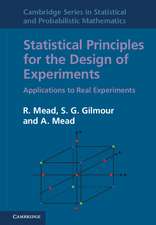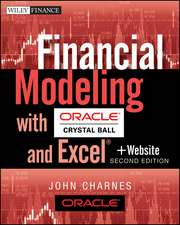Mathematical and Computational Analyses of Cracking Formation: Fracture Morphology and Its Evolution in Engineering Materials and Structures: Mathematics for Industry, cartea 2
Autor Yoichi Sumien Limba Engleză Hardback – iul 2014
After starting with basic elasticity and fracture theories in parts one and two, this book focuses on the fracture morphology that develops due to the propagation of brittle cracks or fatigue cracks.
In part three, the mathematical analysis of a curved crack is precisely described, based on the perturbation method. The stability theory of interactive cracks propagating in brittle solids may help readers to understand the formation of a fractal-like cracking patterns in brittle solids, while the stability theory of crack paths helps to identify the straight versus sharply curved or sometimes wavy crack paths observed in brittle solids.
In part four, the numerical simulation method of a system of multiple cracks is introduced by means of the finite element method, which may be used for the better implementation of fracture control in engineering structures.
This book is part of a series on “Mathematics for Industry” and will appeal to structural engineers seeking to understand the basic backgrounds of analyses, but also to mathematicians with an interest in how such mathematical solutions are evaluated in industrial applications.
| Toate formatele și edițiile | Preț | Express |
|---|---|---|
| Paperback (1) | 640.37 lei 6-8 săpt. | |
| Springer – 23 aug 2016 | 640.37 lei 6-8 săpt. | |
| Hardback (1) | 646.62 lei 6-8 săpt. | |
| Springer – iul 2014 | 646.62 lei 6-8 săpt. |
Din seria Mathematics for Industry
- 18%
 Preț: 948.79 lei
Preț: 948.79 lei - 20%
 Preț: 644.66 lei
Preț: 644.66 lei -
 Preț: 401.61 lei
Preț: 401.61 lei - 18%
 Preț: 790.14 lei
Preț: 790.14 lei - 24%
 Preț: 773.71 lei
Preț: 773.71 lei - 5%
 Preț: 1416.66 lei
Preț: 1416.66 lei - 15%
 Preț: 651.19 lei
Preț: 651.19 lei - 20%
 Preț: 567.44 lei
Preț: 567.44 lei - 15%
 Preț: 641.71 lei
Preț: 641.71 lei - 18%
 Preț: 1226.73 lei
Preț: 1226.73 lei - 18%
 Preț: 944.82 lei
Preț: 944.82 lei - 15%
 Preț: 651.34 lei
Preț: 651.34 lei - 15%
 Preț: 645.79 lei
Preț: 645.79 lei - 15%
 Preț: 643.65 lei
Preț: 643.65 lei - 18%
 Preț: 944.36 lei
Preț: 944.36 lei - 15%
 Preț: 641.38 lei
Preț: 641.38 lei - 18%
 Preț: 947.85 lei
Preț: 947.85 lei - 15%
 Preț: 643.48 lei
Preț: 643.48 lei - 18%
 Preț: 945.30 lei
Preț: 945.30 lei - 20%
 Preț: 997.38 lei
Preț: 997.38 lei - 15%
 Preț: 644.30 lei
Preț: 644.30 lei - 18%
 Preț: 946.10 lei
Preț: 946.10 lei - 18%
 Preț: 890.06 lei
Preț: 890.06 lei -
 Preț: 354.54 lei
Preț: 354.54 lei - 18%
 Preț: 1212.84 lei
Preț: 1212.84 lei - 18%
 Preț: 1103.14 lei
Preț: 1103.14 lei - 15%
 Preț: 641.85 lei
Preț: 641.85 lei
Preț: 646.62 lei
Preț vechi: 760.73 lei
-15% Nou
Puncte Express: 970
Preț estimativ în valută:
123.72€ • 129.19$ • 102.17£
123.72€ • 129.19$ • 102.17£
Carte tipărită la comandă
Livrare economică 15-29 aprilie
Preluare comenzi: 021 569.72.76
Specificații
ISBN-13: 9784431549345
ISBN-10: 443154934X
Pagini: 296
Ilustrații: XII, 282 p. 168 illus., 12 illus. in color.
Dimensiuni: 155 x 235 x 25 mm
Greutate: 0.59 kg
Ediția:2014
Editura: Springer
Colecția Springer
Seria Mathematics for Industry
Locul publicării:Tokyo, Japan
ISBN-10: 443154934X
Pagini: 296
Ilustrații: XII, 282 p. 168 illus., 12 illus. in color.
Dimensiuni: 155 x 235 x 25 mm
Greutate: 0.59 kg
Ediția:2014
Editura: Springer
Colecția Springer
Seria Mathematics for Industry
Locul publicării:Tokyo, Japan
Public țintă
ResearchCuprins
Elastic Boundary-value Problems.- Stress Concentration Problems.- Analysis of Two-dimensional Cracks.- Brittle Fracture.- Fatigue Crack Propagation.- Pattern Formation of Interacting Brittle Cracks.- Crack Paths in Brittle Solids.- Brittle Fracture along Butt-Weld.- Fatigue Crack Paths.- Simulation of Crack Propagation.- Fracture Control of Engineering Structures.- Appendix.- Index.
Textul de pe ultima copertă
This book is about the pattern formation and the evolution of crack propagation in engineering materials and structures, bridging mathematical analyses of cracks based on singular integral equations, to computational simulation of engineering design. The first two parts of this book focus on elasticity and fracture and provide the basis for discussions on fracture morphology and its numerical simulation, which may lead to a simulation-based fracture control in engineering structures. Several design concepts are discussed for the prevention of fatigue and fracture in engineering structures, including safe-life design, fail-safe design, damage tolerant design.
After starting with basic elasticity and fracture theories in parts one and two, this book focuses on the fracture morphology that develops due to the propagation of brittle cracks or fatigue cracks.
In part three, the mathematical analysis of a curved crack is precisely described, based on the perturbation method. The stability theory of interactive cracks propagating in brittle solids may help readers to understand the formation of a fractal-like cracking patterns in brittle solids, while the stability theory of crack paths helps to identify the straight versus sharply curved or sometimes wavy crack paths observed in brittle solids.
In part four, the numerical simulation method of a system of multiple cracks is introduced by means of the finite element method, which may be used for the better implementation of fracture control in engineering structures.
This book is part of a series on “Mathematics for Industry” and will appeal to structural engineers seeking to understand the basic backgrounds of analyses, but also tomathematicians with an interest in how such mathematical solutions are evaluated in industrial applications.
After starting with basic elasticity and fracture theories in parts one and two, this book focuses on the fracture morphology that develops due to the propagation of brittle cracks or fatigue cracks.
In part three, the mathematical analysis of a curved crack is precisely described, based on the perturbation method. The stability theory of interactive cracks propagating in brittle solids may help readers to understand the formation of a fractal-like cracking patterns in brittle solids, while the stability theory of crack paths helps to identify the straight versus sharply curved or sometimes wavy crack paths observed in brittle solids.
In part four, the numerical simulation method of a system of multiple cracks is introduced by means of the finite element method, which may be used for the better implementation of fracture control in engineering structures.
This book is part of a series on “Mathematics for Industry” and will appeal to structural engineers seeking to understand the basic backgrounds of analyses, but also tomathematicians with an interest in how such mathematical solutions are evaluated in industrial applications.
Caracteristici
The first book that focuses on the mathematical and numerical analyses of crack path prediction Contributes to a better understanding of crack path stability and resulting cracking formation in brittle solids Includes accurate prediction methods for the life and path of fatigue crack propagation, as well as possible crack arrest after unexpected brittle crack initiation Includes supplementary material: sn.pub/extras















